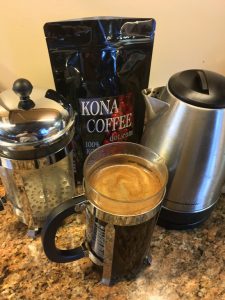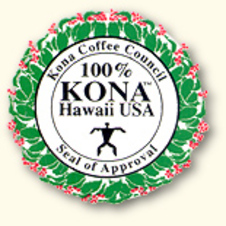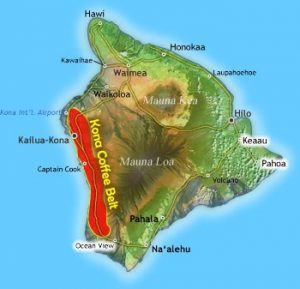KonaCoffee.com

KonaCoffee.com offers a premium selection of 100% Kona coffee beans sourced directly from the slopes of Hawaii’s volcanic mountains. Their signature blend features a medium roast profile with a smooth, balanced flavor and hints of chocolate, caramel, and citrus. As one of the leading providers of Kona coffee online, KonaCoffee.com is a trusted source for coffee enthusiasts seeking the finest quality beans from Hawaii’s renowned Kona region.
Mountain Thunder Kona Coffee

Handpicked from the slopes of the Mauna Loa volcano, Mountain Thunder Kona Coffee offers a smooth, velvety texture with hints of berry and spice. This medium-dark roast blend is perfect for those who prefer a bolder, more robust flavor.
Hula Daddy Kona Coffee

Hula Daddy Kona Coffee is renowned for its exceptional quality and meticulous attention to detail. Their Estate Medium Roast blend features notes of brown sugar, macadamia nut, and tropical fruit, delivering a truly unforgettable cup of coffee.
Greenwell Farms Private Reserve

Greenwell Farms has been producing premium Kona coffee for over 150 years, and their Private Reserve blend is a testament to their expertise. This medium roast blend features a smooth, well-balanced flavor with subtle hints of cocoa and spice.
Koa Coffee Estate Kona Coffee

Grown on the slopes of the Mauna Loa volcano, Koa Coffee Estate Kona Coffee is known for its rich, complex flavor and silky smooth texture. Their Medium Roast blend offers notes of caramel, toasted nuts, and dark chocolate, making it a favorite among coffee connoisseurs.
Kauai Coffee Kona Blend

Blending Kona coffee with beans from the neighboring island of Kauai, this unique blend offers a rich, full-bodied flavor with hints of caramel and stone fruit. Perfect for those looking to explore the diversity of Hawaiian coffee.
Royal Kona Coffee

Royal Kona Coffee has been a fixture in Hawaii’s coffee industry for over 50 years, and their Royal Kona Estate blend is a true testament to their legacy. This medium roast blend features a smooth, mellow flavor with notes of milk chocolate and toasted almond.
Holualoa Kona Coffee Company

Handcrafted in small batches, Holualoa Kona Coffee Company’s Medium Roast blend offers a rich, nuanced flavor with hints of caramelized sugar, citrus, and spice. Sourced from family-owned farms in the heart of the Kona Coffee Belt.
Hawaiian Queen Coffee

Hawaiian Queen Coffee’s Kona Blend is a harmonious combination of Kona coffee beans and beans from the lush rainforests of Hawaii. This medium-dark roast blend offers a bold, full-bodied flavor with notes of dark chocolate and roasted nuts.
Kaiulani Coffee Hawaii
Named after Hawaii’s beloved Princess Kaiulani, this premium Kona coffee blend features beans from the slopes of Mauna Loa and Hualalai volcanoes. With its smooth, balanced flavor and subtle floral notes, Kaiulani Coffee Hawaii is a true taste of paradise.



 Kona is the perfect coffee growing environment in the United States and arguably, in the world. Kona combines the exacting combination of sun, soil, shade and water that coffee trees thrive in.
Kona is the perfect coffee growing environment in the United States and arguably, in the world. Kona combines the exacting combination of sun, soil, shade and water that coffee trees thrive in.






 The Kona Coffee Council is an organization of Hawai’i farmers, processors and retailers who grow, process and sell the World’s Best coffee! In this case over 175 years of development. Particularly to legally be labeled Kona, the coffee beans must be grown only in the North or South Kona districts. Located on the west side of Hawai’i Island (the Big Island). These heritage trees thrive in the
The Kona Coffee Council is an organization of Hawai’i farmers, processors and retailers who grow, process and sell the World’s Best coffee! In this case over 175 years of development. Particularly to legally be labeled Kona, the coffee beans must be grown only in the North or South Kona districts. Located on the west side of Hawai’i Island (the Big Island). These heritage trees thrive in the 
